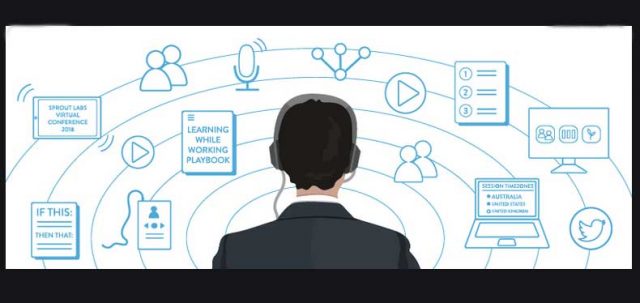A virtual collaboration device is a tool that allows team members to communicate and collaborate remotely. These tools include video conferencing, file sharing, and chat applications.
The right virtual collaboration platform can help your remote agents stay connected, work effectively together, and communicate efficiently with their managers. As a result, it can save your company time and money and improve your agent’s overall productivity.
Video Conferencing System
A virtual collaboration device is a hardware or software solution that helps teams connect remotely. These devices range from simple meeting tools that provide video call functions to comprehensive platforms that support HD video conferencing, file sharing, and meeting recording.
The most common types of video conferencing systems are desktop and room-based. Both solutions use cameras, speakers, and microphones for high-quality video calls.
The videoconferencing hardware and software are built on a computer or laptop in a desktop system. This technology eliminates the need for bulky professional equipment or to rent expensive conference rooms.
For a successful video conferencing experience, you’ll need a solution that can quickly adapt to various environments, from open-plan spaces to huddle rooms. Modern all-in-one displays are easy to set up and take with you anywhere. They’re also scalable, so you can add more participants without compromising quality or functionality.
Display
A virtual collaboration device is an electronic device that allows people to communicate with one another through the internet. These devices can include video conferencing systems, chat tools, and more.
The best collaboration tool on the market should be able to deliver crystal-clear visuals so that remote participants can see each other’s faces and body language. It should also be able to display multiple screens simultaneously without compromising picture quality.
Displays come in all shapes and sizes, with the most popular types including computer monitors, liquid crystal displays (LCD), and LED and OLED screens. Each has its own set of features and benefits.
Software Application
A virtual collaboration device is a software application that lets remote team members work together as if they were in the same room. These tools often include features like instant messaging, video conferencing, email, and mobile phone communication.
A virtual collaboration device is an electronic device that allows people to communicate with one another through the internet. For example, if you’re managing a customer service call center, you may consider implementing an app that provides real-time dashboards for tracking calls and team performance.
Other vital considerations include file- and screen-sharing capabilities that work across multiple devices and wireless connectivity options. You’ll also want to ensure that the AV quality is top-notch so that everyone can enjoy crystal-clear picture quality during presentations and other video chats. It is the best way to ensure that everyone is engaged and productive. Using the right tool for your needs is crucial to the success of your business and your remote team.
Service
A virtual collaboration device is a service that provides teams with the tools they need to work together from anywhere. From project management to file sharing, chat, and video conferencing, these tools can help teams stay organized and collaborate effectively.
When choosing the right tools, consider your team’s needs and your company’s goals. It would be ideal if you also thought about whether your team can handle the dynamic work environment that a virtual platform typically presents.
The best collaboration tools are mobile-friendly and offer responsive design. In addition, it allows employees to work from multiple devices, which may benefit those who don’t have access to two or more monitors at their remote workspace.
Teams must communicate effectively and respect each other’s time to succeed in a virtual workplace. It means setting clear expectations and maintaining regular check-ins. Managers should also look for signs of burnout and encourage their remote workers to take time for self-care and social interaction.
Follow Techiemag for more!
Table of Contents








